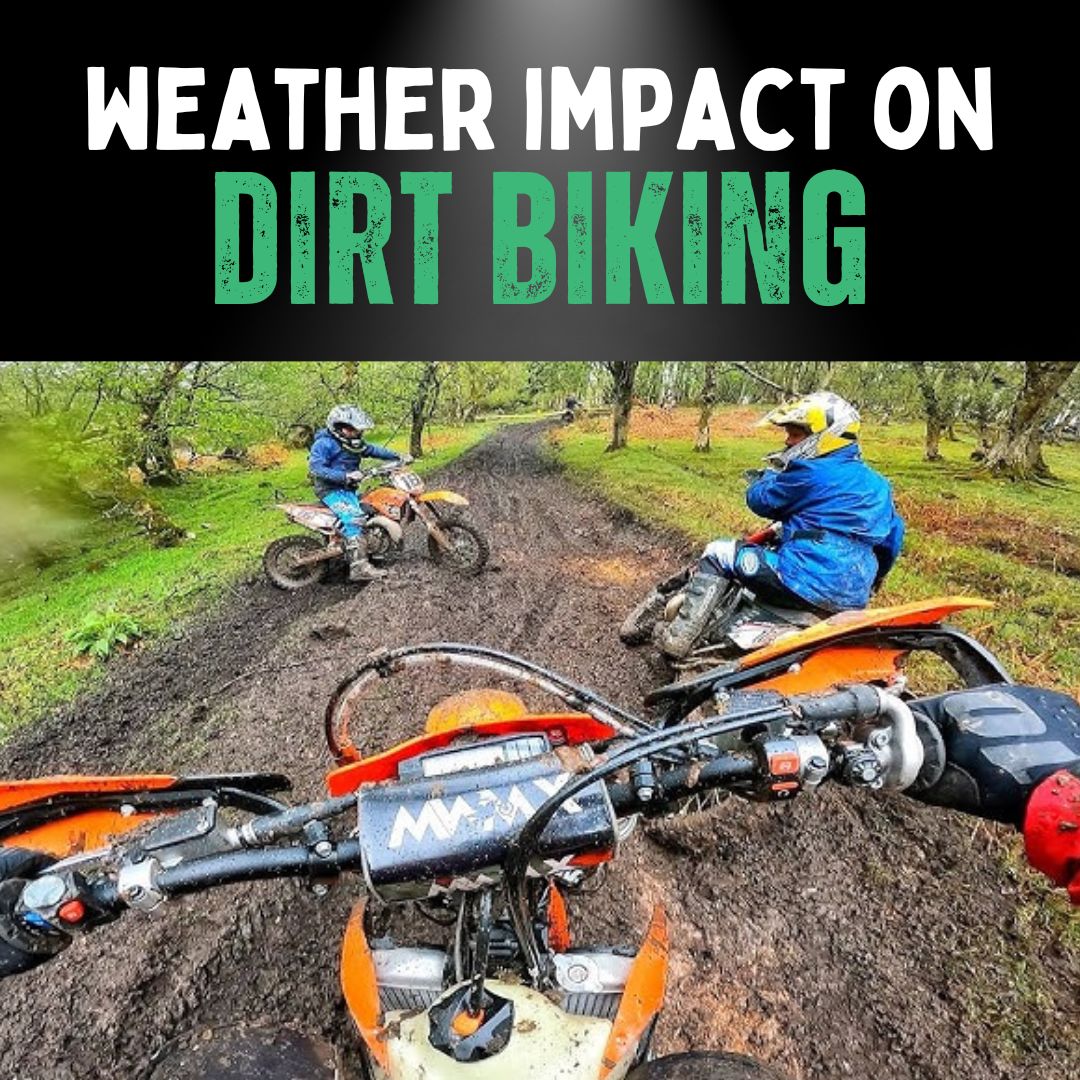
Updated: 24.4.25
Dirt biking is a sport of grit, excitement, and ever-changing conditions. Weather plays a massive role in how your ride feels—and how safe it is. Whether you're a casual rider or a budding motocross star, knowing how to adapt to weather makes a huge difference in both performance and enjoyment.
This article dives into how weather impacts every ride and what you can do to prepare—gear, bike setup, techniques, and maintenance included.
Weather Forecasting and Planning
- Freezing Conditions: Cold affects both you and your bike. Always warm up your engine properly and wear thermal layers to retain body heat.
- Rainy Days: Waterproof jackets, gloves, and boots are a must. Visibility drops, and trails become slippery—ride cautiously.
- Temperature Swings: Dress in adaptable layers. Cold mornings and warm afternoons demand versatility.
- Weather Apps: Use mountain-biking forecast tools for trail-specific conditions. They help you avoid surprises and plan better routes.
How Weather Affects Dirt Bike Performance
Weather doesn't just influence how you feel—it impacts the bike’s grip, braking, suspension, and throttle response. Understanding this allows you to modify your riding and bike setup to match conditions.
Gear Up for the Elements
Must-Have Gear by Condition
- Cold: Insulated gloves, heated grips, balaclava, thermal base layers
- Rain: Waterproof outerwear, anti-fog goggles, sealed boots
- Heat: Breathable jerseys, hydration packs, vented helmets
Riding Techniques for Weather Changes
Adapt Your Ride
- Rain: Slow down, extend braking distance, avoid sharp turns
- Cold: Let the engine warm up fully; keep muscles loose and warm
- Wind: Tuck in to reduce drag; ride with control, not against the gusts
Mechanical Performance in Varied Weather
What Changes Under the Hood
Cold weather thickens suspension fluid and can affect carburetion. Hot weather strains the cooling system. Humidity can dampen throttle response. Adjust suspension, tire pressure, and engine settings to compensate.
Post-Ride Maintenance
Don’t Skip This Step
After riding in rain, snow, or mud, clean your bike thoroughly. Check for water in the airbox, mud in the chain, and wipe down electricals. Use moisture dispersant sprays and re-lube key parts.
- Storage: Keep bikes in a dry, ventilated space.
- Battery: Disconnect and trickle-charge in extreme cold.
- Tires: Elevate the bike to avoid flat spots in winter storage.
Conclusion
Dirt biking is a four-season sport—but only if you know how to adapt. Weather doesn’t have to stop you; with the right gear, knowledge, and techniques, it becomes part of the thrill.
Keep riding smart. Prep for the skies. And enjoy the ride—rain or shine.
Weatherproof Your Ride
Explore weather-ready dirt bikes and gear built for young riders who don’t let the forecast stop them.






Share:
Role of Hydration in Dirt Bike Fitness
Top 10 Tips to PROPERLY Store Your Dirt Bike